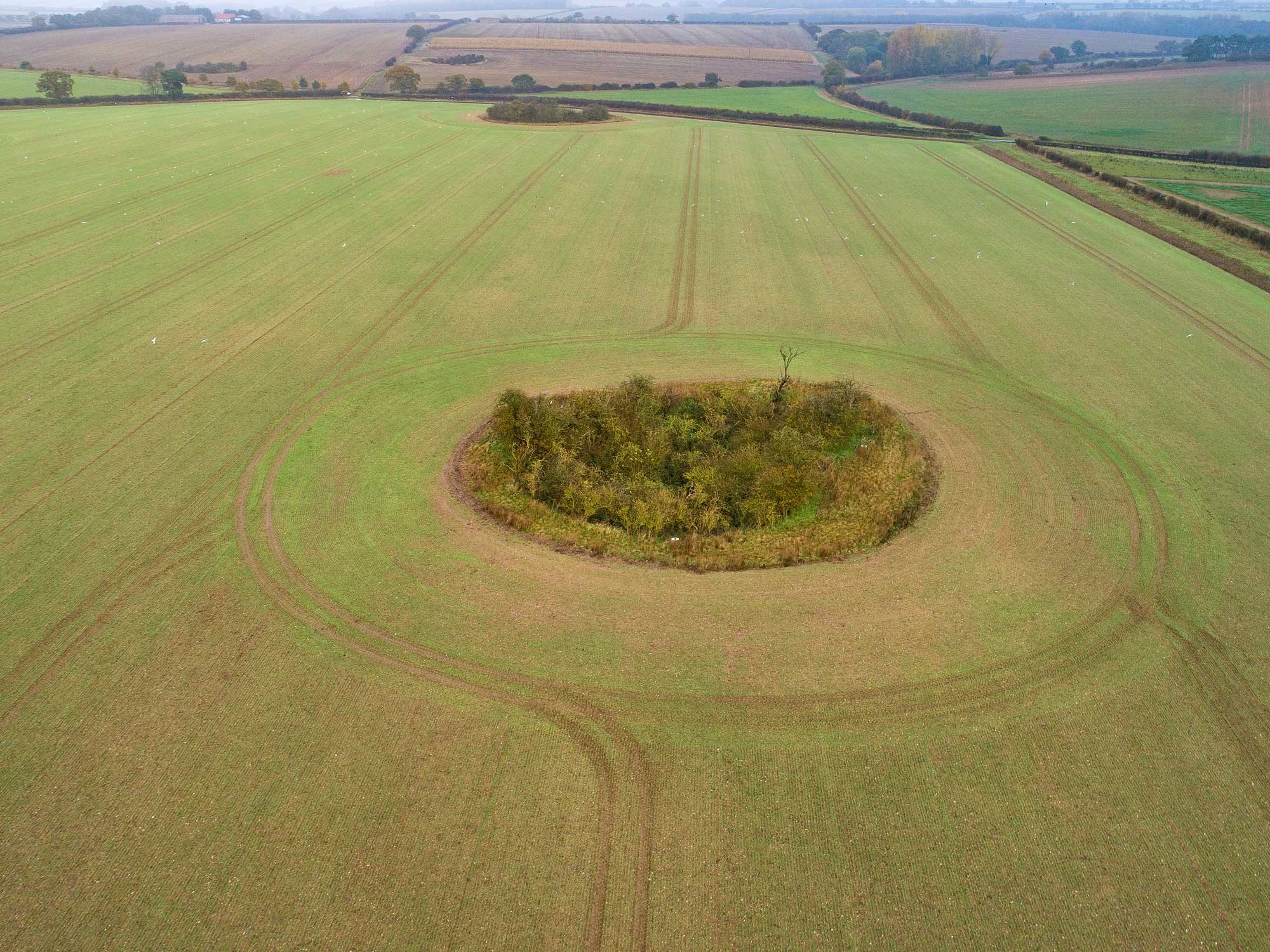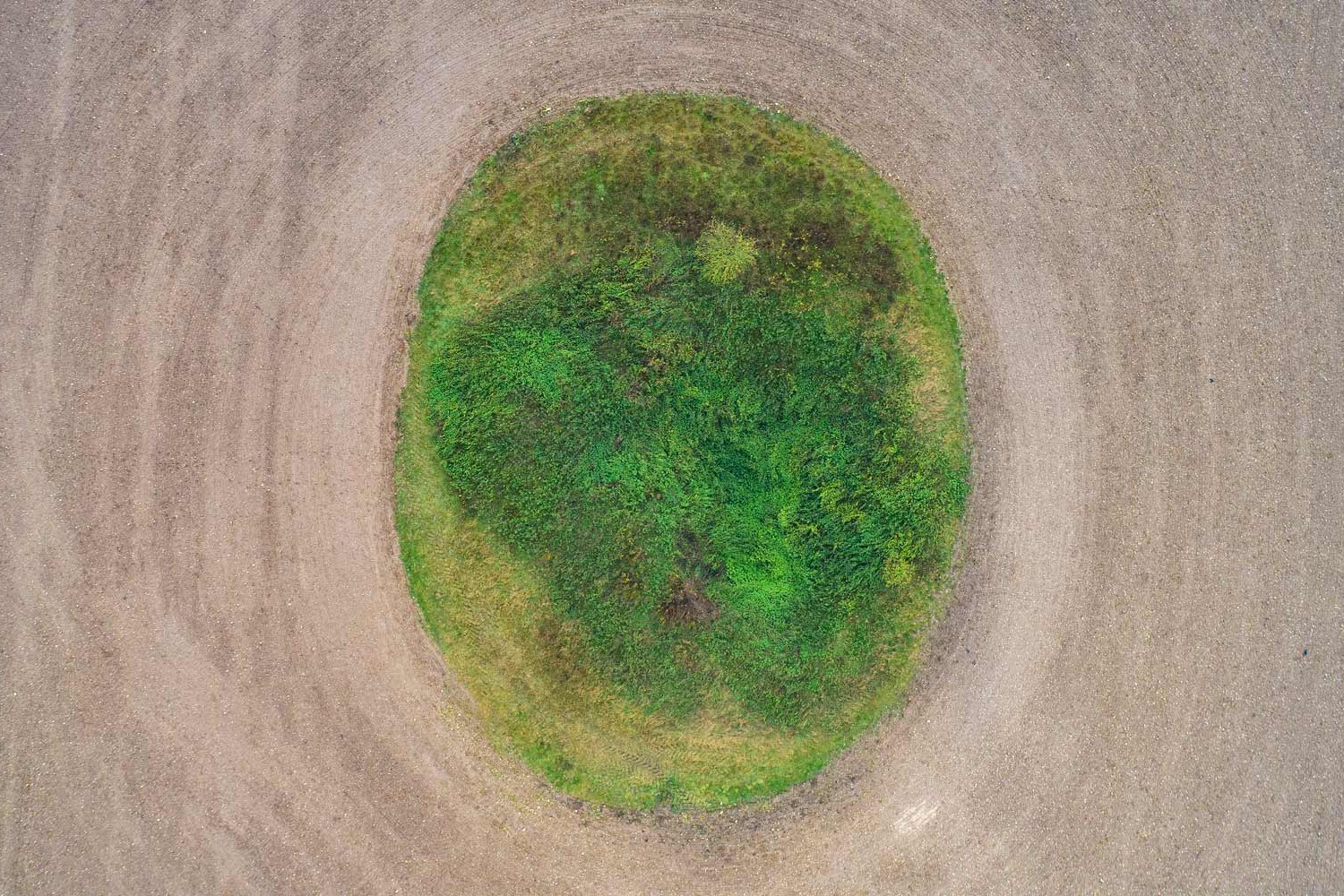
Are these bomb craters, shrieking pits or pingos?
Spotting several mysterious depressions in a number of local fields, Russell Lyon set out on a journey to discover their origins - which took him from the Ice Age to local legends to the Second World War...
If you travel around the Norfolk countryside you may notice some odd pits or circular hollows appearing on otherwise completely flat fields. Most of them are big enough to easily hide a horse and cart or two, and they seem to be especially numerous on the road from Snettisham to Great Bircham. With a great abundance of trees and bushes appearing out of them like uncontrollable nasal hairs, they tend to jump out of the landscape.
When I first became interested in these intriguing contours in the terrain I asked an archaeologist friend what they might be, and he said he’d originally believed them to date from the Second World War, the result of German bombers unloading their cargo before or after their intended target.
Initially, I thought they might have been the result of Neolithic miners digging seams of flint - much like they did at Grimes Graves near Thetford.
After some research, I discovered that ‘Shrieking Pits’ can be found all around Aylmerton, Runton and Weybourne. They’re mostly shallow pits in the fields, virtually all round, filled with water and surrounded by trees. They got their name from local legends of a tall female ghost wandering around weeping while looking into the depressions for a dead infant. According to the stories, this was a baby murdered by a jealous Neolithic husband who buried the dead child and then killed his wife.
As is often the case, the truth seemed to be much more mundane. In almost all cases, the pits have been dated from the 9th-11th centuries and were caused by villagers digging for iron ore and smelting it on site.
However, this explanation didn’t seem to work for the deep hollows between Snettisham and Great Bircham, so I looked a bit further - could they be caused by a natural phenomenon? Were they former pingos?

A pingo is a mound of ice-covered earth, and they’re still found in the Arctic and subarctic. Since Norfolk in the Ice Age was covered in glaciers, could these holes have been formed when the permafrost melted and the pingos (no longer supported by ice) collapsed inwards. Old pingos are difficult to prove, but they have been recorded in the Breckland area - although they’re not universally round. Some are oval in shape, and some are even oblong.
The Ice Age explanation didn’t quite seem to fit the rural picture either, so I decided on some more research. Could they be marl pits?
Marl is calcium carbonate or lime-rich mud that was left behind by retreating glaciers and is now found running like seams along contour lines. Up to 11 types of marl have been described worldwide, but technically they can all be described as calcareous clay.
During the 17th-19th centuries, local farmers discovered that marl could be dug out of the ground to improve thin and poor topsoil - and when spread on the ground (like fertiliser) it actually improved crop yields. This practice may have been known even before Roman times, long before artificial fertilisers were developed and slaked lime was produced in lime kilns.
For generations, farmers would employ local gangs of men (usually around six) to dig out the marl. It was hard work to excavate, haul and spread the marl, but it was often made easier by digging the pits in the middle of fields - which is clearly the case seen from the Snettisham to Great Bircham road. In many cases you can see that one side of the pit is lower at the sloping end - which made it easier for the carts to be loaded.
Many disused marl pits have filled with water since they were abandoned, but this isn’t the case in those I’ve looked at locally, which are universally dry - due to good drainage I imagine.
It means they now serve as an oasis for many animals. For most of the year, greenery and vegetation provides cover for many small animals and makes them less vulnerable to attack by predators. With the fields bare and flat and open over the winter months, these pits are like motorway service stations for wildlife as they’re full of food and shelter. An animal can be out of the wind and away from prying eyes. If you creep up on a pit and peer over the edge (especially in the winter) when it’s cold and windy you may very well disturb resting deer. However, please be responsible and follow The Countryside Code at all times.
Disused marl pits seem to be the best explanation for these strange holes in the ground, and it’s nice to think that long after their industrial use they’ve now returned to the land and are an unexpected bonus for local wildlife and nature lovers.
